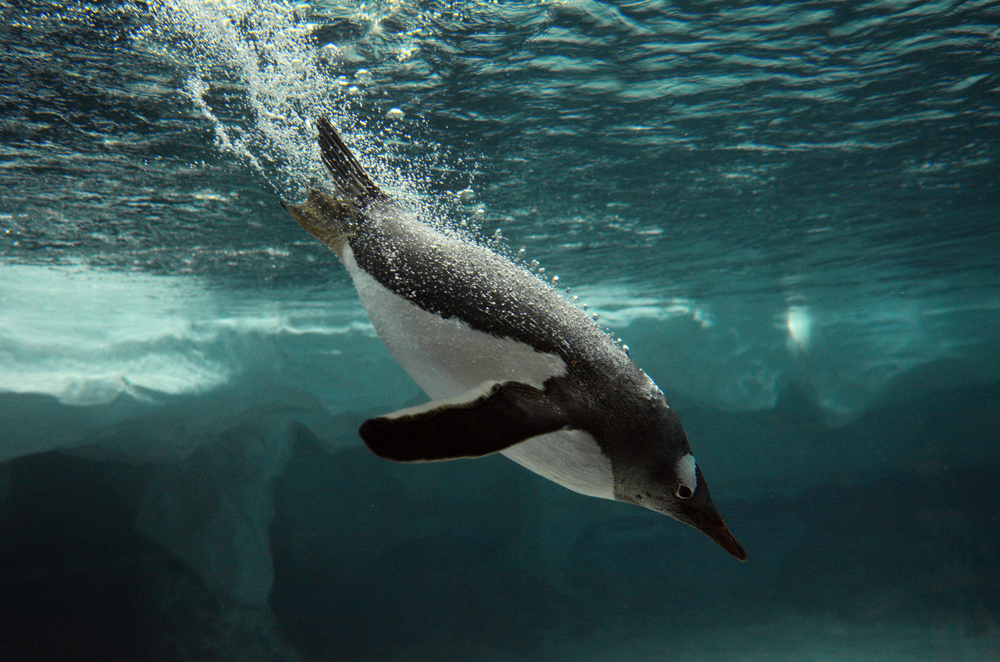How Do Penguin Wings Reach High Speeds Underwater?
Posted on Categories Discover Magazine

Gentoo penguins are the speediest swimming birds in the world. Thanks to their slick wings, the birds can reach speeds of up to 22 mph while searching for food. Now, because of a new study published in Physics of Fluids, researchers understand the mechanism behind their exceptional swimming ability and found that it’s all in the angle of their wings.
By observing how penguins move and position their flippers underwater, researchers can use the findings to design aquatic vehicles without high experimental or computational costs.
“Penguins’ superior swimming ability to start/brake, accelerate/decelerate, and turn swiftly is due to their freely waving wings. They allow penguins to propel and maneuver in the water and maintain balance on land,” says Prasert Prapamonthon, study author and engineer at Thailand’s International Academy of Aviation Industry, in a press release. “Our research team is always curious about sophisticated creatures in nature that would be beneficial to mankind.”
Read More: Researchers Discover 1.5 Million Hidden Penguins by Looking at their Poop From Space
Penguin Agility Underwater
It’s estimated that penguins lost their ability to fly over 60 million years ago and, instead, evolved wings hyper-specialized for movement in the water. They use their wings underwater as if they are flying in the sky, flapping and gracefully maneuvering them in a way that helps them hunt prey and escape danger.
When gentoo penguins turn, their bellies face the inside of the turn, which is the opposite of what planes and flying birds do. During powered turns, penguins flap their wings, but in gliding turns, they hold them to the side.
While they may resemble airplane wings covered in feathers, a penguin’s wings compared to their flying counterparts are shorter and flatter. And to adjust their swimming positions in the water, penguins change the angle of their wings by pitching and flapping. The short and dense feathers along their wings trap air between the skin and water to reduce friction and turbulence as they speed on.
Applying Physics to Flapping Wings
To understand the physics behind their seamless dives, scientists used films of the forward-swimming penguins and 2D side-view motion analysis of the their movement. Researchers also created a hydrodynamic model that simulated the forces and flows of the bird’s wings.
“We proposed the concept of angle of thrust, which explains why finned wings generate thrust: Thrust is primarily determined by the angle of attack and the relative angle of the wings to the forward direction,” says Prapamonthon in a press release. “The angle of thrust is an important concept in studying the mechanism of thrust generated by flapping motion and will be useful for designing mechanical wing motion.”
According to the researchers, the angle of attack is the wing’s angle and the incoming flow of water. The steeper angle of attack on the water, the more lift it will create.
For their next study, the team plans on using a more realistic 3D penguin model to observe further how a penguin’s wings move in water when they start swimming, brake, turn and jump in and out of the water.
Read More: 20 Things You Didn’t Know About … Penguins